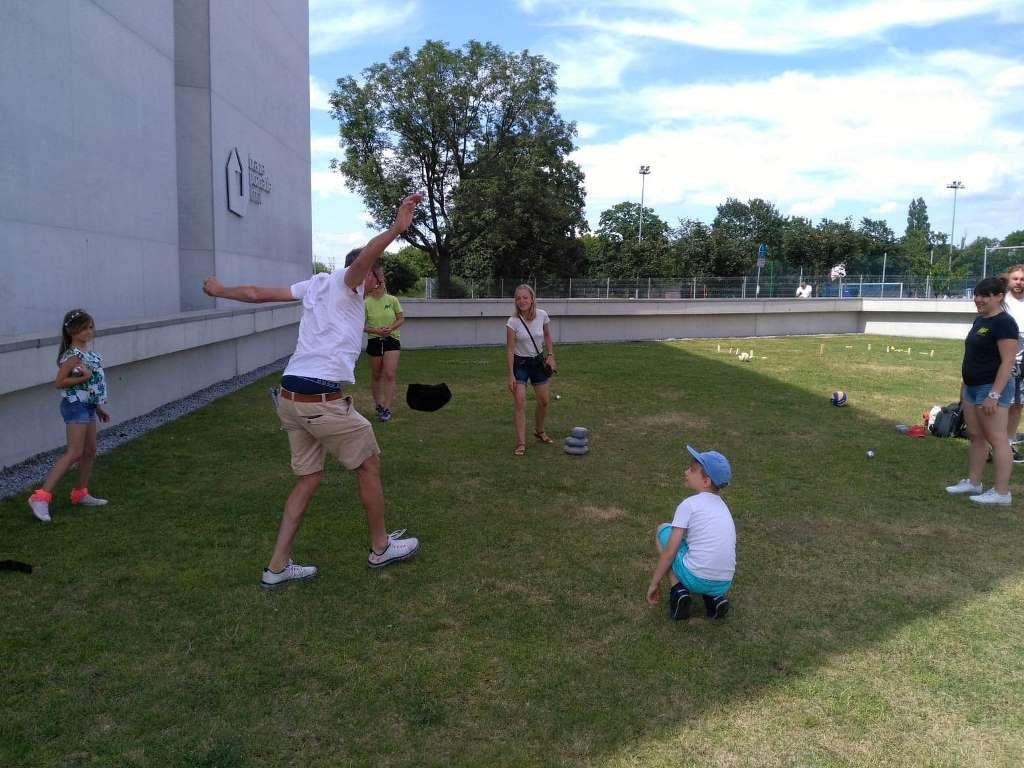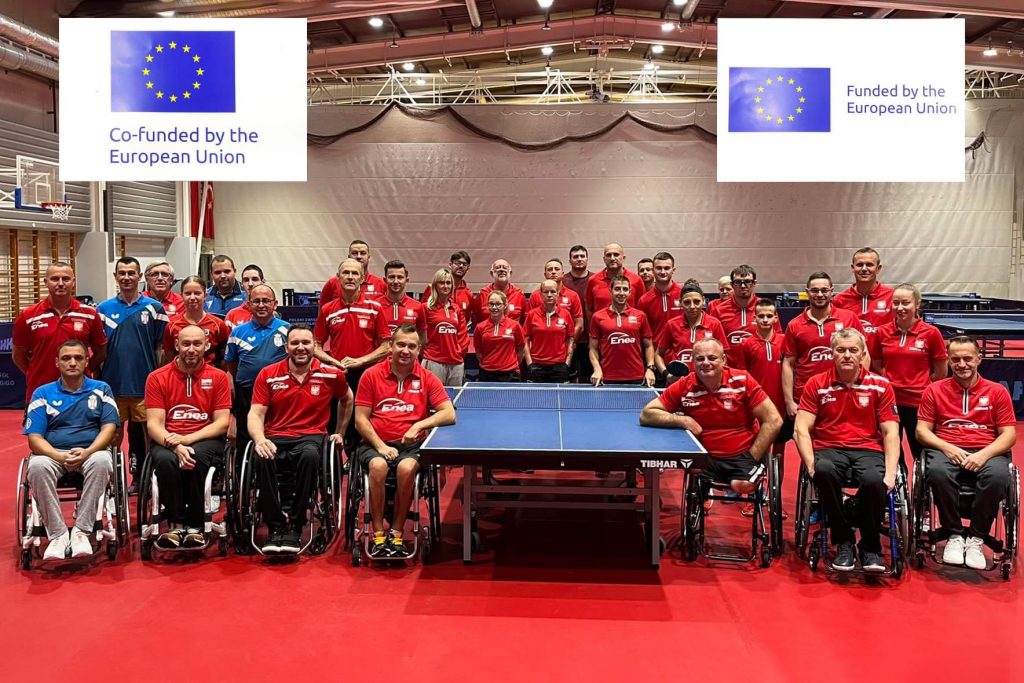
Today on my blog another story on how to use traditional games in practice.
It is about a very interesting initiative from Chinese Anji, sent to me by Zhu Qian.
What is “Spielmobile”?
It is a non-profit organization originated from Germany.
It aims to provide enough court and equipment to children that allows them to have fun, boost their mind and keep away from electronic products.
Nowadays “Spielmobile” has spread to more than 20 countries around the world, including China.
Zhu Qian has been a volunteer for a local “Spielmobile” organization in Anji, China from June this year.
The organization usually holds a big outdoor game workshop in a local community or school every month (it is held indoor when the weather is rainy or snowy outside).
Every activity may include a lot of toys, games and friendly contests for children to play, for instance:
- Bouncy Castle (inflatable castle),
- traditional plays and toys (hoops, spinning toys, marbles etc.),
- Traditional Games (hopscotch, skip rope, stick-pulling, wooden shoe racing etc.),
- Face paint workshop and much more.
Here are some examples of activities:







As you see, there are a lot of games for kids to play. Their parents or grandparents are also enjoying these games!
Next, you will find five (5) most favourable games of “Spielmobile”.
The equipment for these games can be bought in many shops and stores and usually is not expensive.
5 interesting games from workshops in Anji
Game 1: Wooden shoe race (or “team ski”)
This sport was invented in 1500s, during the Ming Dynasty. It was originally used to train soldiers to improve their cooperation in Guangxi, China.
Then, it becomes popular in the other parts of China as an entertainment activity. It improves cooperation, agility and determination of players.
Three (or more) players wear a pair of wooden shoes and try to be first to reach the finish line.
Variations:
- You can adjust number of players to increase or decrease difficulties.
- To make the game more interesting, you can add obstacles along the race (stepping over hurdles, stepping on balloons or bypassing cones etc.).

Game 2: Kangaroo ball race
Kangaroo ball is a kind of inflatable rubber ball. Children can sit on it and bounce forward. It appeals to all children, especially to younger ones.
You must be careful, however, as very young children may not handle it and fall down, while bouncing. It is advisable to give them some time to conquer these “naughty” balloons:)
Variations
- You can make a team relay of it to make game more exciting.
- Ask children to finish bonus task when they make relays (e.g. to answer to math questions).

Game 3: Spijkerpoepen (nail pulling)
It is a traditional game from the Netherlands. The aim is to try to be first to put the “nail” (a string) into the bottle without using your hands.
All you need are nails (or sticks), ropes and some bottles. Tie the rope to the nail and tie the rope around your waist.
It is time to try to move your legs and waists to put the nail into the bottle.
Variations:
- To increase difficulties, you can blindfold children and ask their friends to instruct them to finish the task.
- Play some music before the game begins. Ask children to dance as they want and when music suddenly stops, the game begins. Dancing moves will make rope swing to increase difficulty to put the nail into the bottle.


Game 4: Sack race
The sack race is a competitive game in which participants place their both legs inside a sack (or a pillow case) that reaches their waist or neck and then hop forward from a starting point towards a finish line.
The first person to cross the finish line is the winner of the race.
Sack racing is traditionally seen as an activity for children, but people of any age can compete.


Game 5: Table curling
Curling is a sport in which players slide stones on ice towards a target area which is segmented into four concentric circles. It is related to bowls, boules and shuffleboard.
Two teams, each with four players, take turns, sliding heavy, polished granite stones, also called rocks, across the ice curling sheet towards “the house” – a circular target marked on the ice.
Each team has eight (8) stones, with each player throwing two. The purpose is to accumulate the highest score for a game.
The points are scored for the stones, resting closest to the centre of the house at the conclusion of each end, which is completed when both teams have thrown all of their stones.
Table curling is a table top version of normal curling game. It is popular among both children and adults.



The meaning of traditional games in practice
The organisation Spielmobile and its local initiatives, such as this in Chinese Anji, have shown how to use traditional sports, games nad plays in practice.
These games give children, adults and the elderly, among others:
- rest and break from using omnipresent, electronic devices (it is now so important for children!),
- relax and nice time together,
- physical, mental and social health,
- opportunity to meet and integrate with other people,
- joy, laugh, great fun.
There are much more such traditional games. You can read about them, among others, on my BLOG (links below):
Traditional games for families – part I
Traditional games for families – part II
Traditional games for families – part III
Other articles: HERE
Practical activities in Poland
In Poland, you can also find similar initatives, like my practical activities from traditional games.
It is always a great way to spent your free time!

Information and pictures: Zhu Qian, Anji, China


